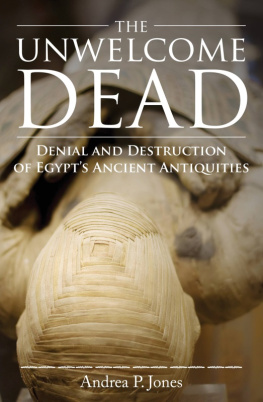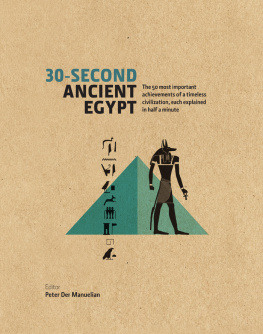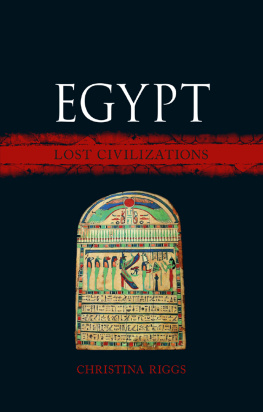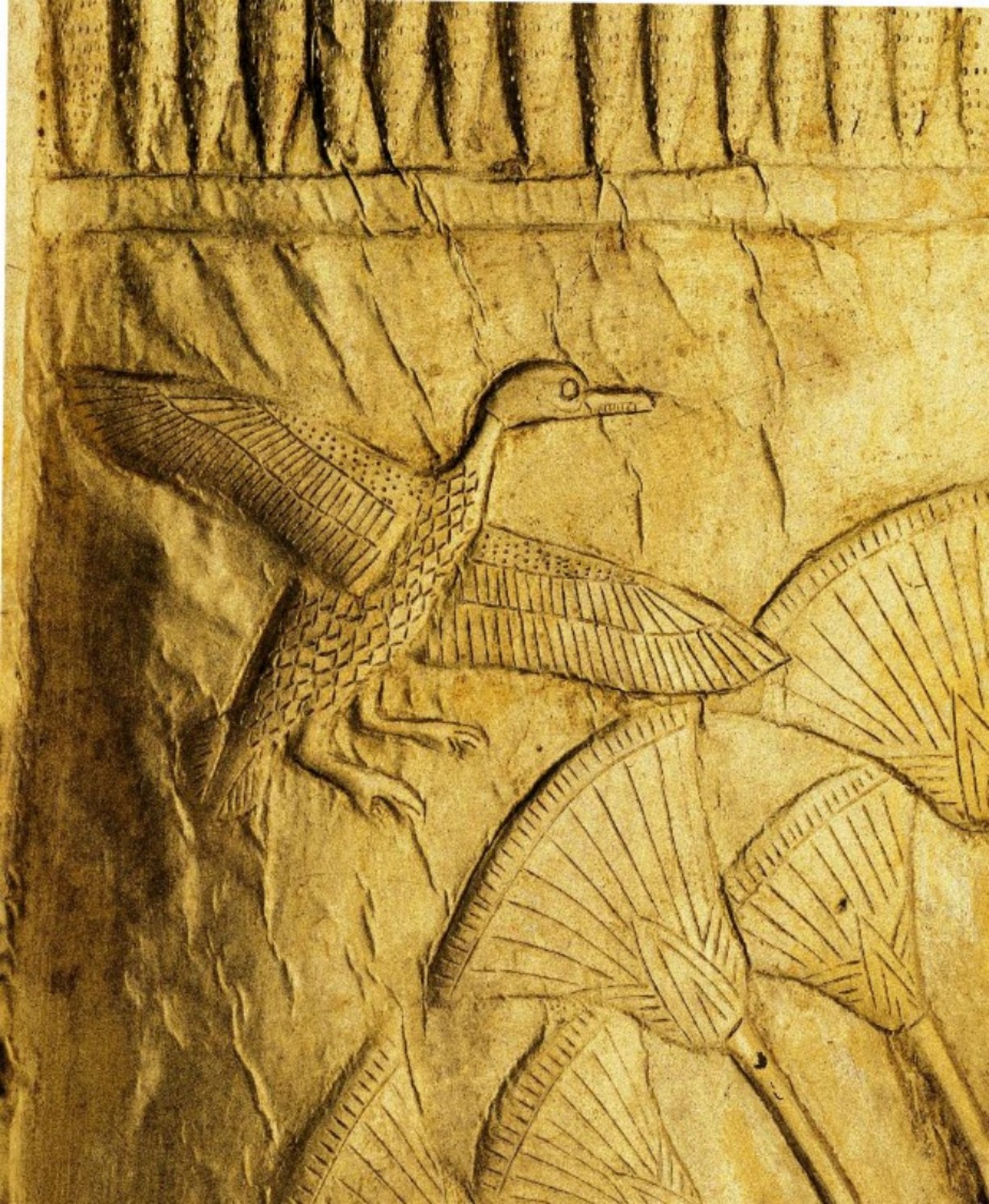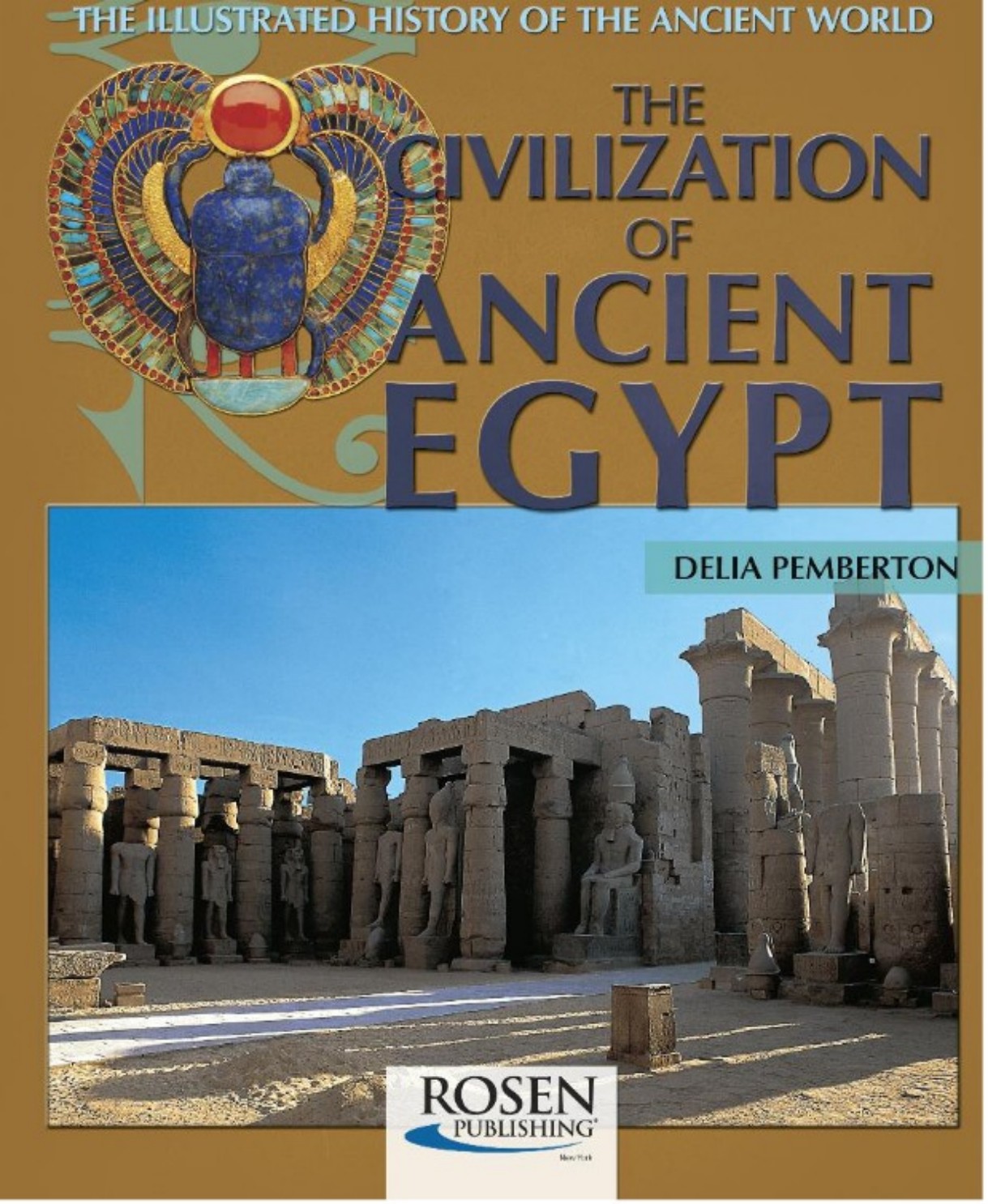This edition published in 2013 by:
The Rosen Publishing Group, Inc.
29 East 21st Street New York, NY 10010
Additional end matter copyright 2013 by The Rosen Publishing Group, Inc.
All rights reserved. No part of this book may be reproduced in any form without permission in writing from the publisher, except by a reviewer.
Library of Congress Cataloging-in-Publication Data
Pemberton, Delia.
The civilization of ancient Egypt/Delia Pemberton.
p. cm.(The illustrated history of the ancient world) Includes bibliographical references and index.
ISBN 978-1-4488-8500-8 (library binding)
1. EgyptCivilizationTo 332 b.c. Juvenile literature.
I. Title.
DT61 .P444 2013 932'.01dc23
2012033048
Manufactured in the United States of America
CPSIA Compliance Information: Batch #W13YA: For further information, contact Rosen Publishing, New York, New York, at 1-800-237-9932.
Copyright Duncan Baird Publishers 2 004 Text copyright DELIA PEMBERTON 2004 Artwork copyright Duncan Baird Publishers 2 004
(For copyright in the photographs see acknowledgement pages, which are to be regarded as an extension of this copyright.)
Typeset in Perpetua and Optima
Color reproduction by Scanhouse, Malaysia
Printed in China by Imago
Notes
The abbreviations CE and BCE are used throughout this book:
CE Common Era (the equivalent of AD)
BCE Before the Common Era (the equivalent of BC)
Captions to pages 1-4 appear on page 130.
All measurements given in maps and diagrams are approximate.
A note on Egyptian royal names
Ancient Egyptian kings had five titles, the last two of which were presented in cartouches: the coronation name and the family name.
In their own time, kings were known by the first of these two names; Ramesses II, for example, would have been called Usermaatra (his coronation name). However, the modern practice is to use the family name, in this case Ramesses. Confusion over names arises out of transliteration differences that result in alternative spellings and the fact that Egyptian kings are sometimes referred to by the classicized versions of their names: Amenemhat as Amenemmes, Amenhotep as Amenophis, Thutmose as Tuthmosis, and Sety as Sethos. This book uses spellings that reflect familiar usage while remaining close to the Egyptian originals.
DEDICATION
In loving memory of my mother, Eileen Pemberton, 1926-2003
CONTENTS
THE PALEOLITHIC PERIOD TO THE 17TH DYNASTY(c.100,000c.1550BCE)
The Womb of the Goddess: The Paleolithic Periodto the Early Dynastic Period
She Who Loves Silence: The 3rd to 10th Dynasties
The City of the Scepter: The 11th Dynasty
Amun the Mighty: The 12th Dynasty
Rivals for the Kingdom: The 13th to 17th Dynasties
SPECIAL FEATURE: Exploration and DiscoveryTHE 18TH DYNASTY (c.1550c.1295BCE)
Unity Restored: Ahmose I and Amenhotep I
A Valley for the Kings: Thutmose I and Thutmose II
Daughter of Amun: Hatshepsut
Years of Conquest: Thutmose III
SPECIAL FEATURE: Karnak and the Cult of Amun
The Hero King: Amenhotep II
Securing the Peace: Thutmose IV
Monuments to the Dazzling Sun: Amenhotep III
A Time of Heresy: Amenhotep IV/Akhenaten
Treasures of the Boy King: Tutankhamun
Amun Restored: Ay
The General Takes Charge: HoremhebTHE 19THAND 20TH DYNASTIES (c.1295c.1069BCE)
Stability and Renewal: Ramesses I
Honoring the Ancestors: Sety I
Ramesses the Great: Ramesses II
SPECIAL FEATURE: Servants in the Place of Truth
Thebes in Troubled Times: Merneptah
Struggles for Power: Amenmesse and Sety II
A Decade of Transition: Siptah, Tawosret, Sethnakht
United with Eternity: Ramesses III
Decline of a Royal City: Ramesses IV to Ramesses XIAFTER THE NEW KINGDOM (c.1069BCEc.641CE)
Disunity and Foreign Rule: 3rd Intermediate Period
The Last Egyptian Pharaohs: The Late Period
Greeks and Romans: Ptolemaic to Byzantine Periods
FOREWORD
BY JOANN FLETCHER
This book tells the story of Thebes, ancient Egypts most famous city. Better known today by its Arabic-derived name of Luxor, Thebes has been a tourist destination for more than two millennia, attracting countless visitors who came to marvel at its buildings. So numerous are Thebes ancient monuments that the place has been justifiably described as the worlds largest open-air museum. Known to the ancient Egyptians as Waset, Thebes is situated in what was Upper Egypt in the southern part of the country. Occupying both sides of the Nile River, Thebes population resided mostly on the east bank as what was once a small provincial town slowly developed into an increasingly cosmopolitan city that ruled an empire.
Much ofThebes expansion, in both size and political importance, can be traced back to two of Egypts great warrior dynastieslocal families who rescued their country from civil war on two separate occasions during the 11th and 17th dynasties. As their home town became Egypts most significant city and ultimately the countrys religious capital,Thebes local god Amun was elevated to a national deity. His cult center at Karnak, on the Niles east bank, was embellished by succeeding generations of kings, each one eager to demonstrate his piety through increasingly generous donations. As Karnak rapidly expanded into a vast complex of shrines and chapels, its priests grew so powerful that they came to rival the pharaohs themselves and eventually these self-styled priest-kings controlled the whole of southern Egypt.
Yet in addition to its great status as Egypts religious capital, Thebes was also the royal burial ground for more than 500 years. The spectacular rock-cut tombs in the remote Valley of the Kings on the citys west bank once contained the mummies of ancient Egypts most famous kings and queens, laid to rest with spectacular treasures such as those discovered in the tomb ofTutankhamun in 1922.Yet contrary to popular belief, the worlds most famous graveyard has by no means given up all its secrets, and its tombs, treasures and royal mummies continue to make headlines by yielding up the most amazing discoveries. Between the Valley of the Kings and the Nile River, each king was also commemorated with his or her own ostentatious funerary (mortuary) temple. Designed to perpetuate their remembrance for eternity, these were referred to as their Mansions of Millions of Years. Thebes west bank plain is covered with a series of these monuments. Among the best known are Hatshepsuts terraced temple at Deir el-Bahri and the atmospheric ruins of Ramesses Ils Ramesseum, the Medinet Habu complex of Ramesses III, and Amenhotep Ills Colossi of Memnon. Close by lie the sprawling ruins of Amenhotep IIIs royal palace at Malkata, originally fronted by a 1.5 mile (2.4 km) wide harbor, and exemplifying the way in which this king more than any other remodeled the Theban landscape to his own specifications. A second, albeit more modest, settlement on the west bank, the village of Deir el-Medina, was once home to the workers who built the royal tombs, its remains providing a precious insight into the lives of those who actually created some of ancient Egypts most splendid monuments.



